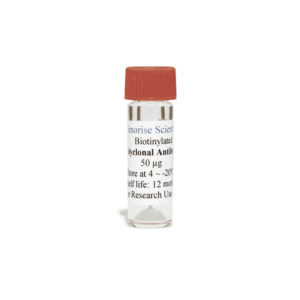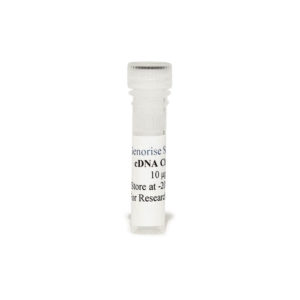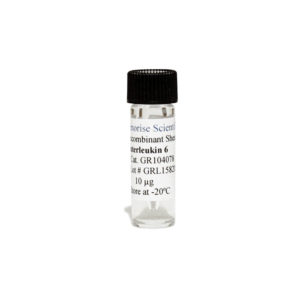Recombinant Bovine Neuregulin 1
$285.00 – $456.00
The recombinant bovine NRG1 protein is derived from in vivo expression of bovine NRG1 gene in E. coli and purified using his-tag affinity column and can be used in multiple applications such as cell culture.
Alternative names for NRG1: Neuregulin 1
This product is for Laboratory Research Use Only, not for diagnostic and therapeutic purposes or any other purposes.
- Description
- Product Citations
- Reviews (0)
Description
Genorise Recombinant Bovine NRG1 Summary
Alternative names for NRG1: Neuregulin 1,
Alternative name for bovine: Cattle, cow, bull
Product Specifications
| Purity | > 95%, by SDSPAGE under reducing conditions and visualized by silver stain. |
| Endotoxin Level | < 0.1 EU per 1 μg of the protein by the LAL method. |
| Activity | na |
| Source | E. coli derived canine NRG1. |
| Accession # | F1MPD0 |
| N-Terminal Sequence Analysis | Ser |
| Amino Acid Sequence | Ser20-Val201 |
| Predicted Molecular Mass | 20 kDa |
| SDS-PAGE | 35 kDa, reducing conditions |
Background:
Neuregulin 1 (NRG1) is a protein that is encoded by the NRG1 gene.[1] NRG1 is one of four proteins in the neuregulin family that act on the EGFR family of receptors. Neuregulin 1 is produced in numerous isoforms by alternative splicing, which allows it to perform a wide variety of functions. It is essential for the normal development of the nervous system and the heart.[2] At least six major types (different N termini) of neuregulin 1 are known.[3] Six types exist in humans and rodents (type I, II and III NRG1 are expressed in excitatory and inhibitory neurons, as well as astrocytes), and some types (I and IV) can be regulated by neuronal activity.[4] Neuregulin 1 is thought to play a role in synaptic plasticity. It has been shown that a loss of Neuregulin 1 within cortical projection neurons results in increased inhibitory connections and reduced synaptic plasticity.[8] Similarly, overexpression of Neuregulin 1 results in disrupted excitatory-inhibitory connections, reduced synaptic plasticity, and abnormal dendritic spine growth. Thus, careful regulation of the amount of Neuregulin 1 must be maintained to preserve an intricate balance between excitatory and inhibitory connections within the central nervous system (CNS). Any disruption in this inhibitory system may contribute to impaired synaptic plasticity, a symptom endemic in schizophrenic patients. Neuregulin 1 has been shown to interact with ERBB3[5] and LIMK1.[6] A schizophrenia associated- missense mutation in Neuregulin 1 has been shown to be associated with changes in cytokine expression using lymphoblastoid cells of heterozygous carriers vs homozygous wild type individuals [41]
References
- Holmes WE, et al. (1992) Science. 256 (5060): 1205–10.
- Britsch S (2007). Advances in Anatomy Embryology and Cell Biology. 190: 1–65.
- Steinthorsdottir V, et al. (2004). Gene. 342 (1): 97–105.
- Liu X, et al. (2011). J. Neurosci. 31 (23): 8491–501.
- Carraway KL, et al. (1997). Nature. 387 (6632): 512–6.
- Wang JY, et al. (1998). J. Biol. Chem. 273 (32): 20525–34.
- Marballi K, et al. (2010). Journal of Molecular medicine (Berlin). 88 (11): 1133–41.
Product Citations
Be the first to review “Recombinant Bovine Neuregulin 1”
You must be logged in to post a review.




























Reviews
There are no reviews yet.